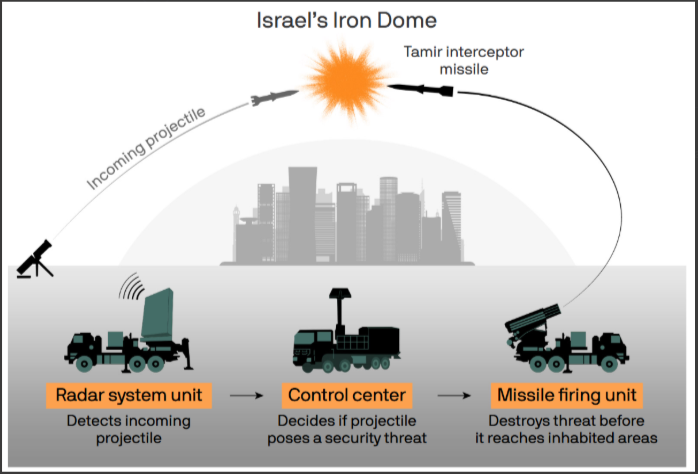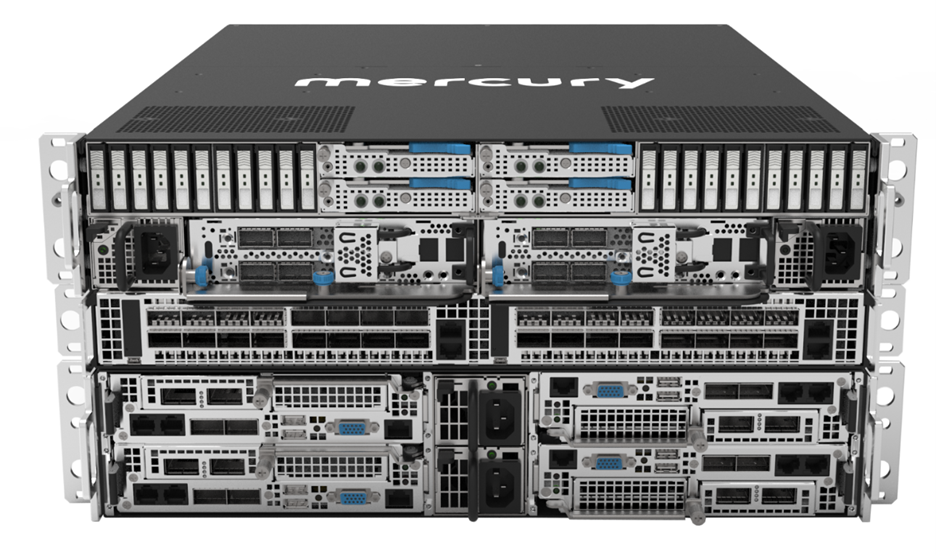 |
| By Michael A. Robinson |
The world watched history unfold as Israel launched the boldest one-two military strike in a generation, targeting deep inside Iran.
For all the offensive precision, what truly stunned military analysts and everyday Americans alike was the defensive tech on full display.
Satellites monitored. Missiles flew. Civilians braced.
But true to its advanced design, Israel’s Iron Dome lit up the sky.
And it worked.
While casualties occurred, the numbers could have been catastrophic without Israel’s anti-missile defense net.

Millions of Americans watched it unfold in real time — including officials from the Trump administration.
What they saw wasn’t just an Israeli system. It was a glimpse of what the U.S. has in store for North America.
And I’ve found a company at the heart of it — a firm with deep roots in U.S. defense and aerospace tech, quietly building the tools that will be essential for America’s “Golden Dome.”
Even better? It just crushed earnings.
And based on its trajectory, profits will likely double in less than two years …
Vengeance Is Mine
Iran and Israel have been unfriendly neighbors for decades.
The most recent issue was Hamas’ attack on Israel on October 7, 2023, from Gaza.
Hamas is one of many groups that Iran funds as a proxy army so it can conduct guerilla attacks on its enemies without Iran directly attacking anyone.
Since then, Israel has had little patience with the puppet masters in Tehran.
Iran’s talk of advancing a nuclear bomb program was the last straw.
Israel sent in aircraft and missiles to wipe out launch facilities, destroy radars and take out tactical leaders.
Once Israel got control of the skies, Iran’s military and nuclear sites were totally vulnerable.
It also delivered secure air space to the U.S. if it wanted to send its own message to the Iranian theocracy.
The surprise U.S. B-2 bomber raid was the knockout punch.
Trump’s Role Model
For the Trump administration — and investors for that matter — the Iron Dome played an outsized role in dominating the air space and defending military and civilian populations in Israel.
Basically, the system uses a combination of radar that is sent to a battle management control division that defines the threat and, if necessary, deploys a ballistic missile defense.
This worked on two levels this time around.
It gave the Israelis the confidence they could hit Iran repeatedly and suffer minimal civilian casualties in return.
But it wasn’t for lack of trying on Iran’s part.
It fired nearly 550 ballistic missiles, dozens of cruise missiles and 1,000 drones.
Israel suffered 31 hits, with 28 killed and 3,000 injured. Iran suffered 974 deaths and nearly 4,000 wounded.
This shows the difference when you have shield and how it allows a country to project its power.
Next Up, Golden Dome
There are two priorities in the Trump administration’s mandate for the defense sector in general — deliver more value and deliver it cheaply.
That means changing procurement and R&D processes and looking beyond the big “primes,” the big defense contractors and to tech-focused mid-cap firms that the primes rely upon for many subcontracting roles.
The one I think is going to do very well under this new structure is edge computing leader Mercury Systems (MRCY).
You see, because Golden Dome is going to be focused on cutting-edge tech like hypersonic missiles as well as space-based threats, the complexity of surveilling, assessing and acting in seconds is going to take massive processing power.

Edge computing is the new wave of technology that puts that speed and power at the tip of the spear, rather than at a remote data center.
Mercury is already delivering this tech for fighter aircraft, unmanned drones as well as satellites.
But Mercury isn’t just a defense company, it’s taking secure signals, security and processing into the skies and into space.
It’s a company that’s doing well now but is primed to thrive in coming years as satellite constellations multiply and space becomes the next frontier rather than the final frontier.
And Golden Dome will be front and center in that evolution.
A Great Defense Play
If you agree with me that you can tell the character of someone by the company they keep, then you can see why I like Mercury so much.
First of all, its tech is agnostic.
It’s not just a savvy defense leader. It’s a focused tech unit in the aerospace sector.
Its edge computing is going to be a more powerful tool as AI advances so it can help with reconnaissance, monitoring or command and control.
Mercury also makes secure, rugged microelectronics that are used in sensors and displays that are used in cockpits and simulators.

Its products are open architecture, so they can work with other components.
It has deep relationships with Intel (INTC) and Nvidia (NVDA).
But its defense and aerospace partners are a “who’s who” of industry leaders, including Lockheed Martin (LMT), Boeing (BA), RTX (RTX) and Northrop Grumman (NOC).
That’s why its defense and civilian units combined to make Mercury a great “twofer.”
But let’s be clear, the U.S. hasn’t started the Golden Dome project yet, although it’s the kind of idea that politicians and industry can support.
Yet, Mercury has so many programs going that it doesn’t need the Golden Dome.
It has a $1 billion-plus backlog (of which $745 million will be recognized this fiscal year) that’s continuing to grow.
And the earnings growth is off the hook.
For the full year, Mercury is expected to grow earnings per share by nearly 160%.
At just a quarter of that rate, we’d see earnings double in less than two years.
All this, even before we break ground on Golden Dome.
This is the kind of undercover tech stock that will hide quietly … until it lights up your portfolio.
Best,
Michael A. Robinson
P.S. All this tech and AI processing need one other thing: Power. And lots of it.
That’s why my colleague, Sean Brodrick, put together the complete guide to how that will be supplied.
You can hear about it all — and the stocks positioned to benefit from it — right here.

